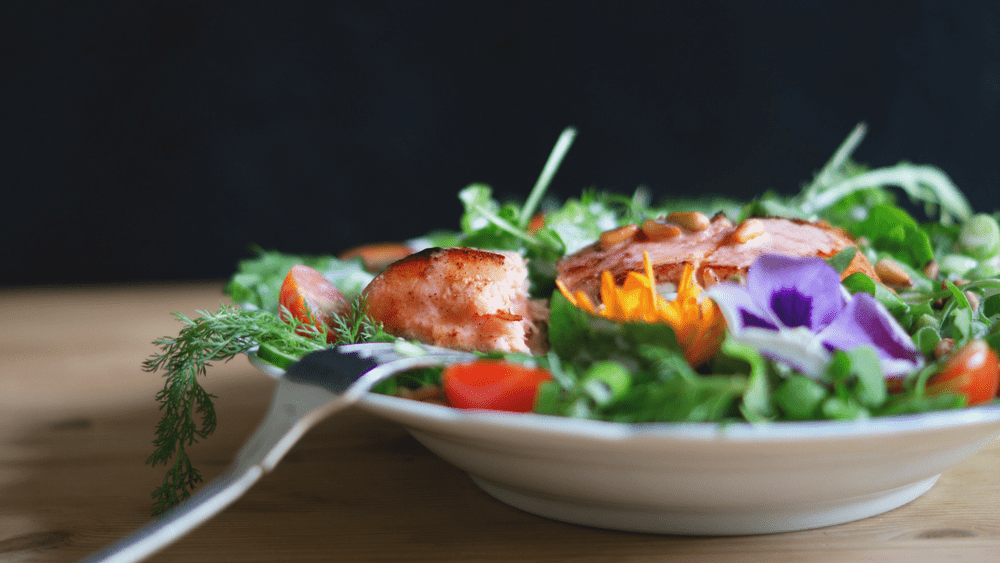Indulging in dessert often comes with a side of guilt, especially when it’s something as decadent as cookie dough. However, the quest for a healthier alternative has led to innovative recipes that allow for indulgence without compromising nutritional goals. A protein-packed cookie dough recipe promises the joy of nibbling on your favorite treat while integrating the benefits of higher protein content, often through ingredients like nut butters, protein powders, and legumes.
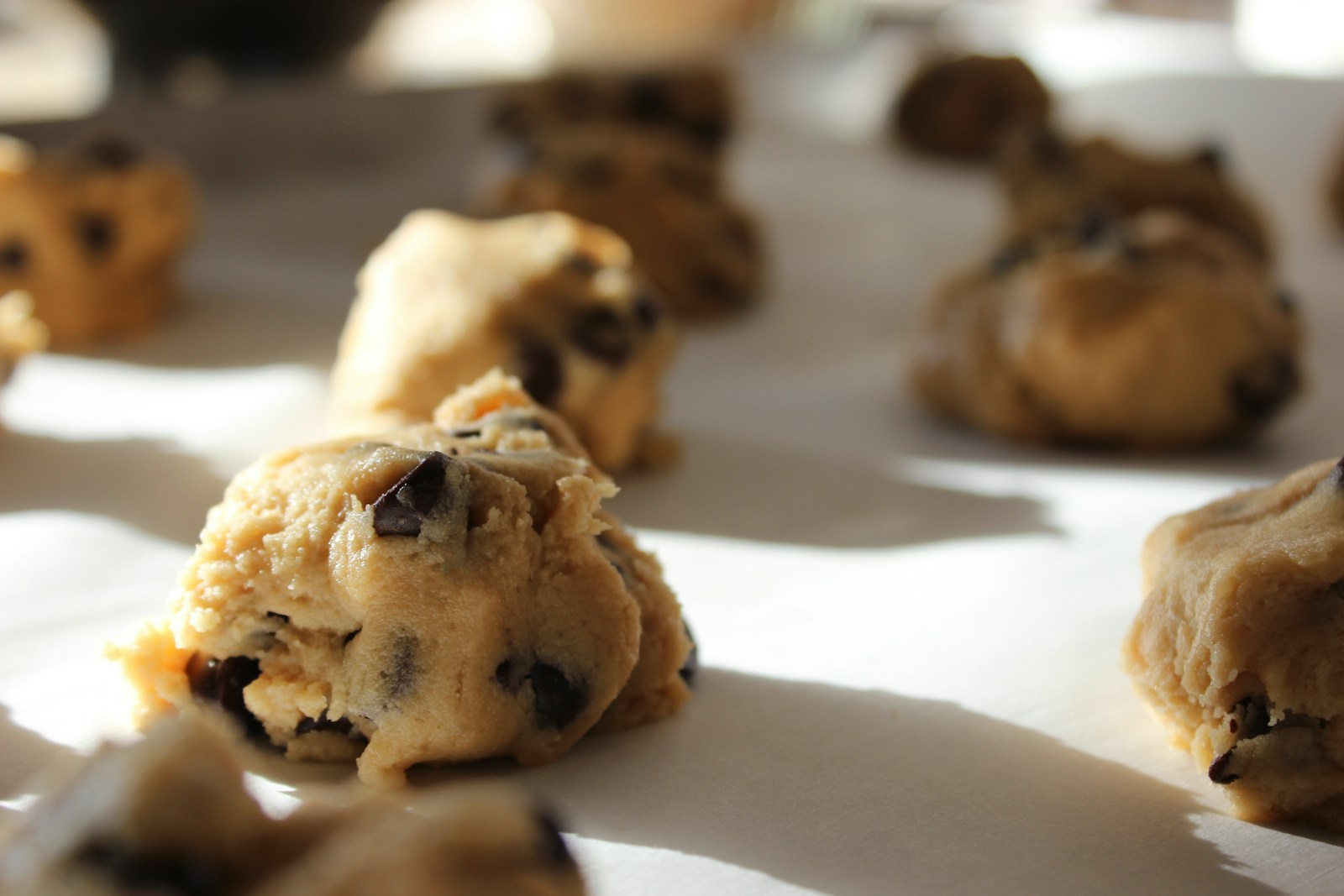 Crafting a cookie dough that is not only healthy but also delicious requires attention to ingredient quality and proportions. A delicate balance between taste and texture is achieved by selecting natural sweeteners and protein sources that complement each other without overpowering. These recipes are designed with health in mind but do not sacrifice the classic cookie dough flavor that is beloved by many.
Crafting a cookie dough that is not only healthy but also delicious requires attention to ingredient quality and proportions. A delicate balance between taste and texture is achieved by selecting natural sweeteners and protein sources that complement each other without overpowering. These recipes are designed with health in mind but do not sacrifice the classic cookie dough flavor that is beloved by many.
Key Takeaways
- Protein-rich cookie dough offers a nutritious twist on a classic dessert.
- Careful selection of ingredients ensures a balance of flavor and health benefits.
- Recipes can be adjusted for various dietary needs and preferences without losing the essence of traditional cookie dough.
Essential Ingredients
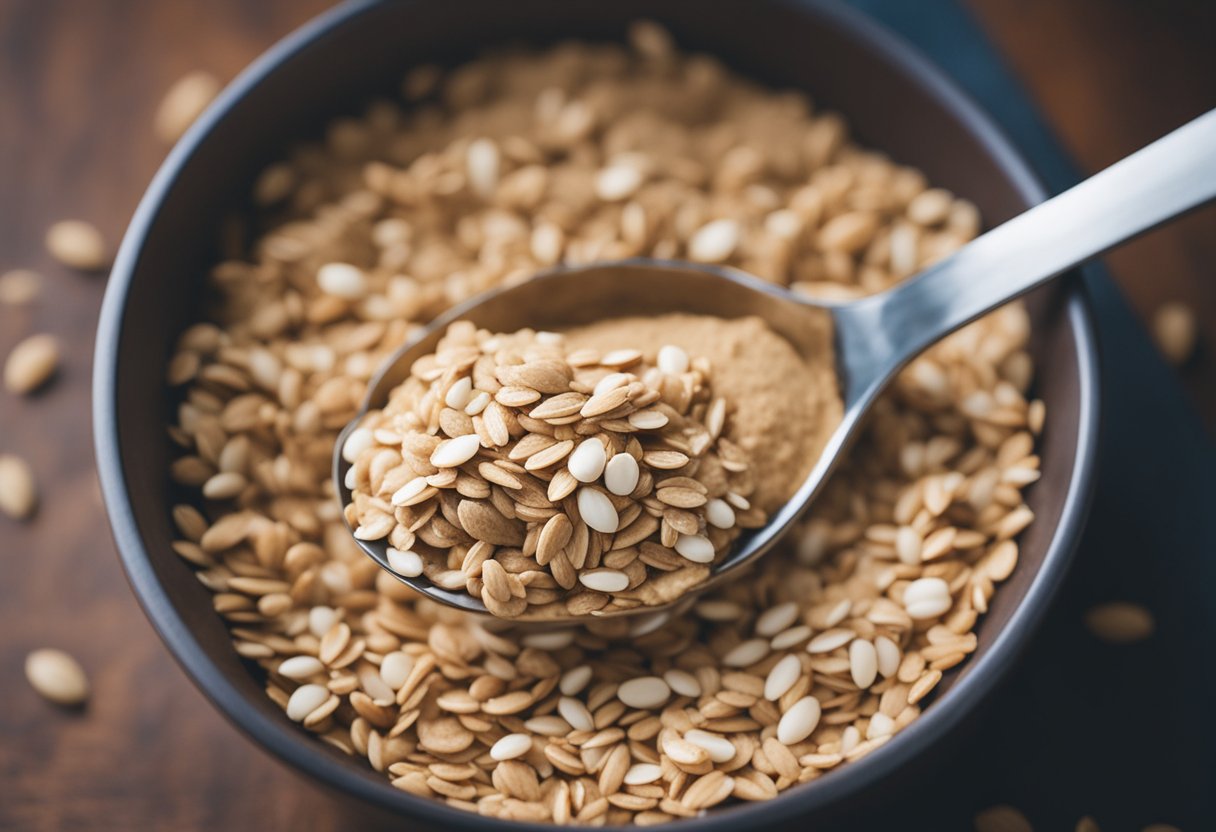
In crafting a healthy protein-packed cookie dough, selecting the right ingredients ensures a balance of flavor, nutrition, and texture. Carefully chosen proteins, sweeteners, and fats come together to create a wholesome treat.
Protein Sources
The cornerstone of any protein-rich cookie dough is, naturally, the protein source. For this recipe, protein powders are the go-to option due to their concentrated content and versatility. Types of protein powder to consider include:
- Vanilla Protein Powder adds a sweet flavor.
- Chocolate Protein Powder gives a rich, cocoa twist.
- My Favorite Protein Power is Vital Protein. I love using the non-flavored one because you can add it to anything. Bonus it is also packed with collagen.
Aside from powders, here are some alternative protein-enriched ingredients such as:
- Oat Flour, which provides a hearty texture.
- Almond Flour, offering a nutty taste and extra protein.
- Garbanzo Beans, great for texture and adds protein.
Sweeteners
Choosing the right sweeteners can impart great taste while keeping the recipe healthy. Options range from natural sweeteners to sugar-free alternatives:
- Honey or Maple Syrup can be used for their natural sweetness.
- For those avoiding sugar, options like Stevia or Sugar-Free Syrup are available.
When desiring a hint of texture and sweetness, chocolate chips can be a delightful addition. Sugar-free or dark chocolate variants are preferred to maintain the health profile of the cookie dough.
Healthy Fats
Healthy fats are essential for the texture and satiety factor of the cookie dough. Nut butters not only add healthy fats but also enhance the flavor:
- Peanut Butter: Offers a classic taste.
- Almond Butter and Cashew Butter: Provide a creamy consistency with a twist.
- Coconut: Its oil or shredded form can be a tropical addition to the mixture.
In terms of liquid to bring the cookie dough together, milks such as Almond Milk can be used for a low-calorie, dairy-free option that retains creaminess.
Creating the Perfect Texture
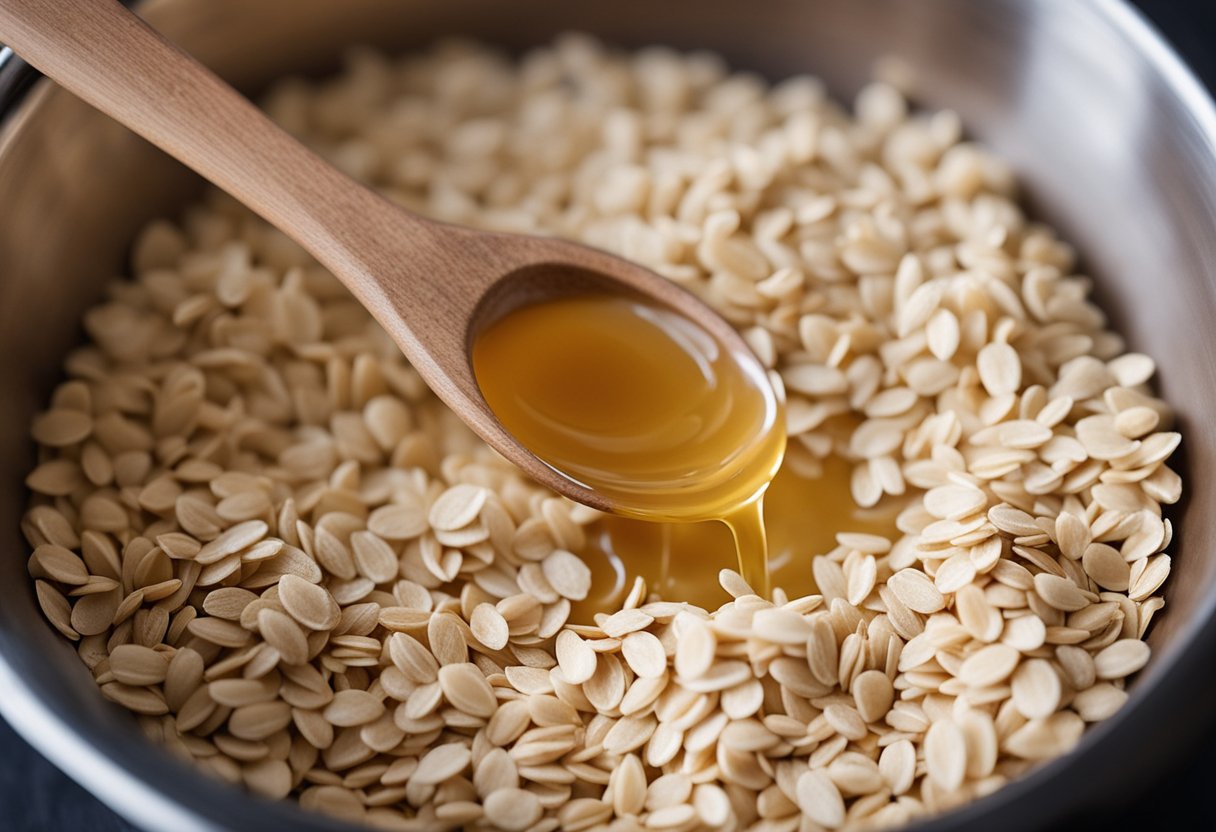
Achieving the ideal texture for protein-packed cookie dough involves carefully balancing dry and liquid ingredients to ensure a satisfying consistency and structure without needing to bake.
Dry Ingredients for Structure
In protein-packed cookie dough, the structure is paramount. Utilizing almond flour and oat flour provides a robust base that not only adds a subtle nuttiness but also caters to a gluten-free diet. These flours create a dense yet soft texture, essential for mimicking traditional cookie dough. It’s important to measure these flours accurately:
- Almond flour: 1 cup
- Oat flour: 3/4 cup
Adding a pinch of salt enhances the overall flavor and brings out the sweetness of the dough. For a firmer structure, one can also consider a tablespoon of coconut flour as a substitute for added absorbency.
Liquids for Consistency
The correct consistency in protein-packed cookie dough is achieved with the inclusion of liquids. While traditional recipes call for eggs, opting for a no bake version requires alternatives that maintain the dough’s form without the need for heat. An appropriate balance of liquid ingredients provides moisture and binds the dry elements together without causing sogginess. The liquids typically include:
- Buy or homemade cashew butter – 1/2 cup
- Non-dairy milk (such as almond or oat) – 2-3 tablespoons as needed
To blend these ingredients into a smooth consistency, one should employ a food processor or blender. This ensures that all ingredients are evenly distributed, avoiding any gritty texture. The processor also helps in emulsifying the mixture, thus creating a dough-like consistency that is pliable yet holds its shape.
Dietary Variations and Substitutions
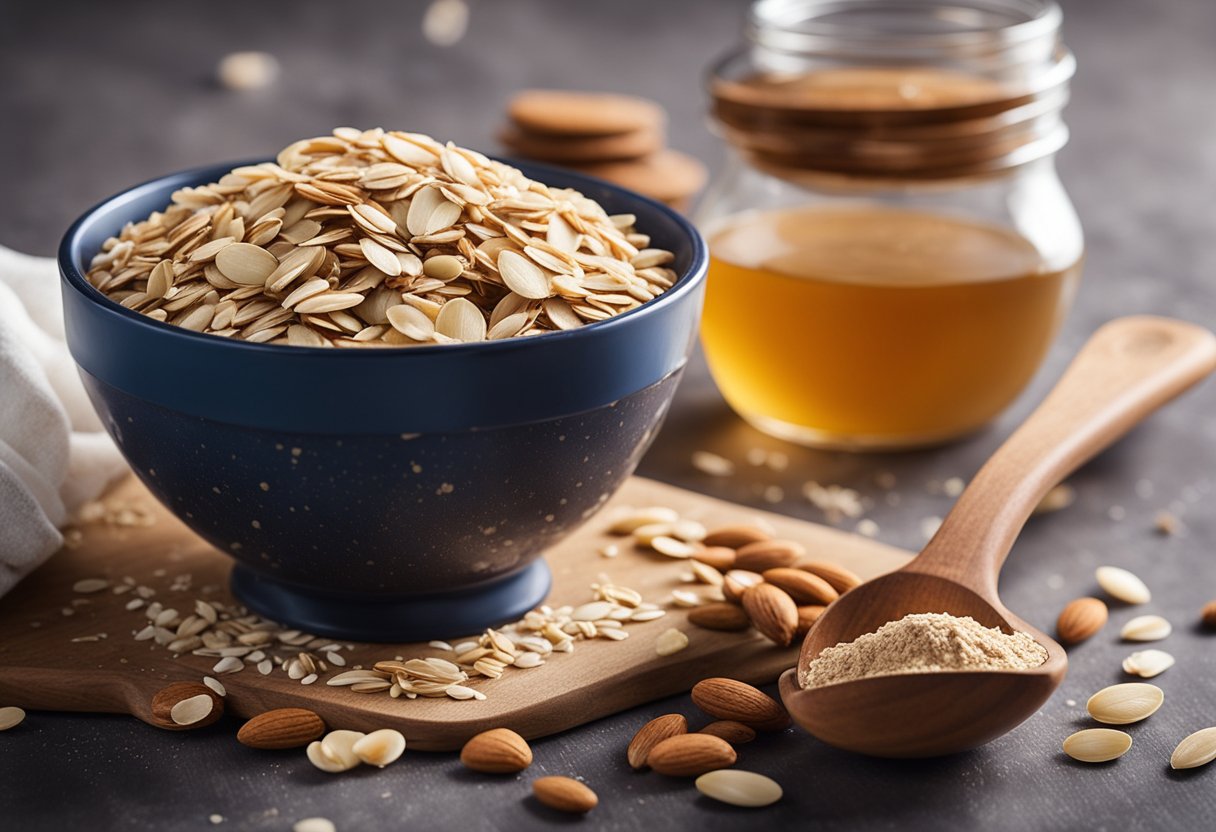
This section provides specific suggestions for adapting the cookie dough recipe to various dietary needs, ensuring that everyone can enjoy a healthy treat tailored to their preferences or restrictions.
Gluten-Free Options
For individuals requiring a gluten-free diet, it’s imperative to replace ingredients that typically contain gluten. They can substitute regular flour for a gluten-free flour blend. Additionally, if the recipe calls for rolled oats, ensure they are certified gluten-free to prevent any cross-contamination with gluten-containing grains.
Vegan Alternatives
To cater to a vegan diet, one must replace any dairy and egg ingredients with plant-based alternatives. Non-dairy milk such as almond, soy, or oat milk can be used in place of traditional cow’s milk. For eggs, flaxseed or chia seeds mixed with water can serve as a binding agent.
Low Carb and Keto Friendly
For those following a low carb or keto lifestyle, traditional flours and sugars are not suitable. Alternatives such as almond flour or coconut flour can be used. In place of sugar, one might opt for a low carb sweetener like stevia or erythritol. It’s also important to ensure that other ingredients added, like chocolate chips, are keto-friendly.
Note: Always double-check labels as product formulations can vary and may not be suitable for all dietary needs.
Full Recipe
Storage and Serving Suggestions
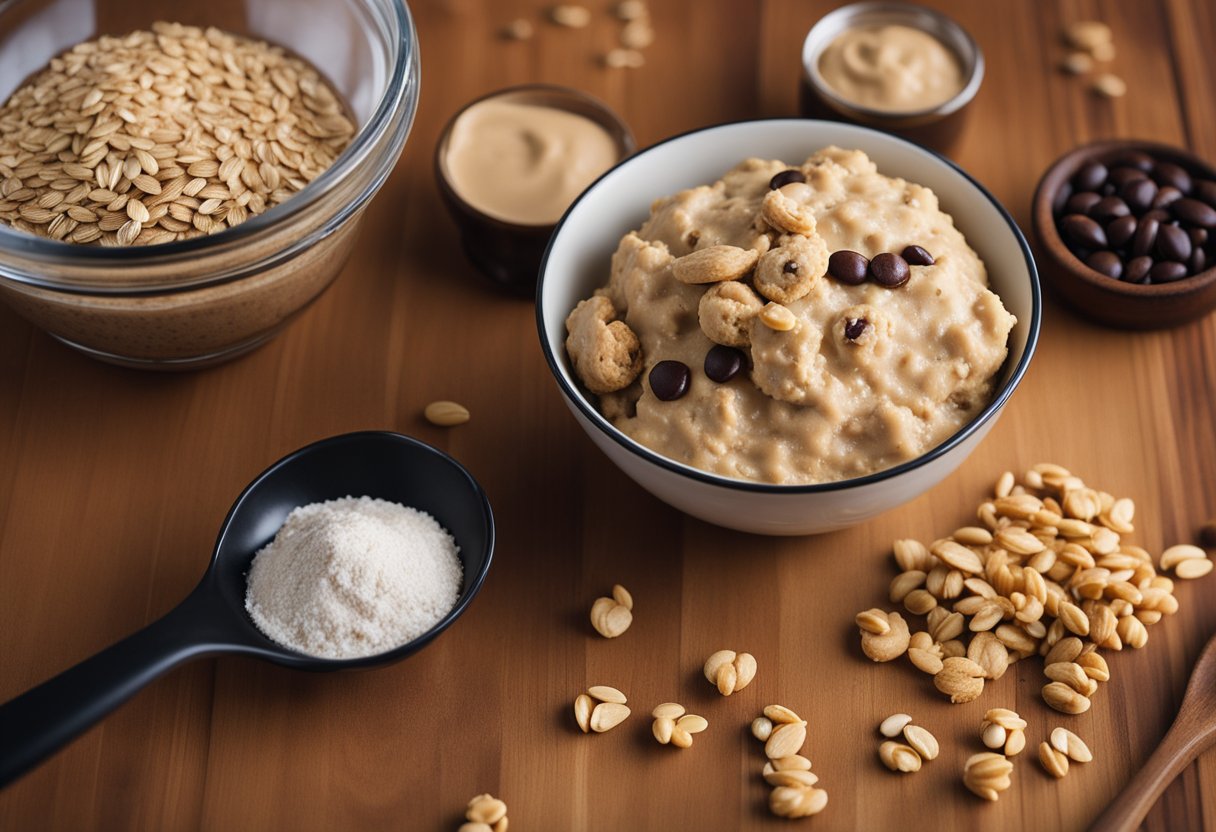
Proper storage is essential for maintaining the freshness of your protein-packed cookie dough, while creative serving ideas can transform it into an enjoyable and satisfying treat.
Storing for Freshness
For optimal freshness, the cookie dough should be stored in an airtight container. To refrigerate, it can comfortably stay fresh for up to 5 days. For longer storage, freezing is an effective option, and the dough can be kept in the freezer for up to 3 months. Ensure that the dough is wrapped tightly to prevent freezer burn, ideally by using plastic wrap or a reusable, sealed bag before placing it in the container.
Serving Ideas
When ready to serve, the cookie dough can be enjoyed as a snack directly from the refrigerator or freezer. For a softer texture, let it sit at room temperature for a few minutes. To enhance the experience, one may serve small scoops of the dough with a sprinkle of sea salt, or dip the balls in melted chocolate and chill them until the coating hardens for a sweet treat.


